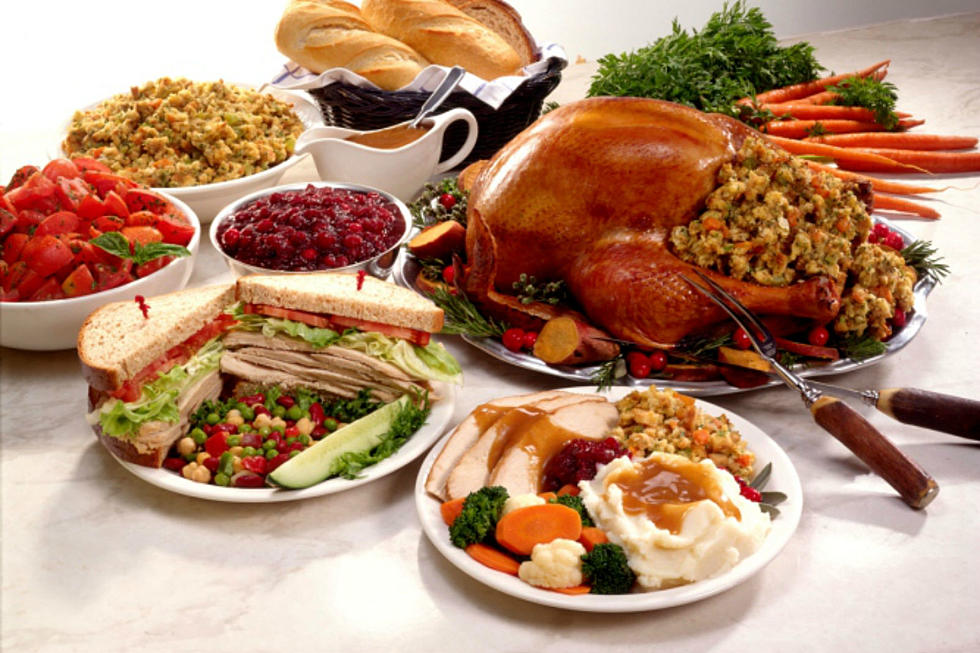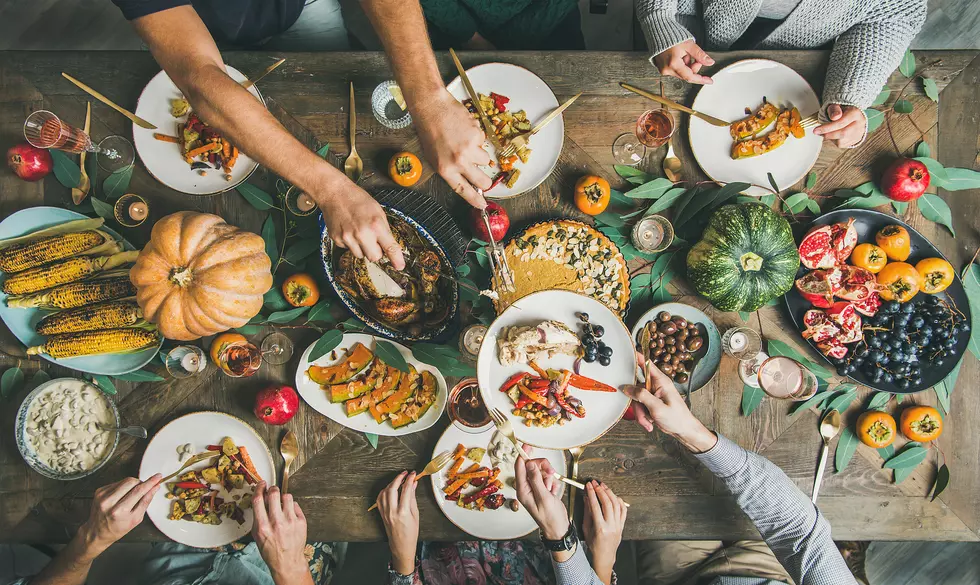
Thanksgiving — The Turkey Do’s and Don’ts That Will Save Your Day
Thanksgiving can be a breeze or your biggest nightmare. Check here for the turkey do's and don'ts that could save your day. Whether you have been doing this for years or this is your first time hosting the big bird for your family, you'll be a champion.
Thanksgiving Turkey Dos and Donts ThinkStock
TURKEY DO'S AND DON'TS
- Don't wait too long to buy the bird, especially if you plan on buying frozen
AND you plan to brine your bird. Remember the bird will take about four days to thaw in the refrigerator (the safest way-count on a thawing rate of 4 pounds a day) - If your turkey has already been pre-brined by the maker of your turkey, you won't want to brine it again. Check the ingredients, some frozen turkeys contain up to 8% of a solution of water, salt, spices and natural flavoring to help lengthen the shelf life.
- Like with any meat, you want to make sure the bird is at room temperature before you roast the big fella for your feast.
- Make sure your turkey is dried with a paper towel inside and out this will help give you a crispy skin
- Do use a roasting rack in a roasting pan, if you don't have one, invest in one. Without one your turkey could end up dry and overcooked on the bottom.
- Don't stuff your bird, ever! There are so many reasons not to from bacteria growth to overcooked turkey, why would anyone stuff a bird?! Stuffing is evil and nobody wants to get sick on Thanksgiving.
- Roast your turkey at a high temperature, 475 degrees for the first 30 minutes uncovered to render the fat and crisp the skin, then turn the oven down to 325 degrees and cook till the instant read thermometer reads 160 degrees when inserted near the thickest part of the thigh. (if you have an organic turkey it is safe to remove the turkey at a lower temp which will give you the most optimal conditions for a moist and juicy turkey) A turkey cooked at 325 degrees, weighing between 15 and 16 pounds will take roughly three and a half hours to cook, but remember to always check the actual internal temp with an instant read thermometer.
- DO NOT cook the turkey until the pop-up pops up! By the time the pop up pops, your turkey will already be overcooked and dry. Remember when you remove the turkey from the oven that it will continue to cook for up to ten minutes, so if you remove the turkey at 180-185 degrees, as most poppers do, your turkey could then reach an internal temp of 190 or even more... hope you made a lot of gravy in this case.
- Do remember to cover the breast of the turkey with a foil 'shield' after the initial half hour of cooking to prevent the skin from burning.
- Don't baste your EVER, EVER, EVER! Basting your turkey in fact does nothing for the flavor of the turkey nor does it assure a moist turkey. What it does do is lower the temperature of the oven every time you open it to do your basting dance an that increases the time you'll have to cook the turkey which increases the odds of drying out the turkey... see the nasty cycle of basting?!
- Let your bird sit and hang out after you have removed him from the oven. Take him out of the roasting pan and get making your gravy, the turkey needs to rest at least 15 minutes after roasting, 30 minutes would even be better. The juices will then stay in the turkey and not end up dripping from the counter-top, Fido might like it, but if you like juicy flavorful turkey, you won't.
Now consider yourself armed for turkey duty! Get out there and make some awesome turkeys!
More From 99.9 The Point









